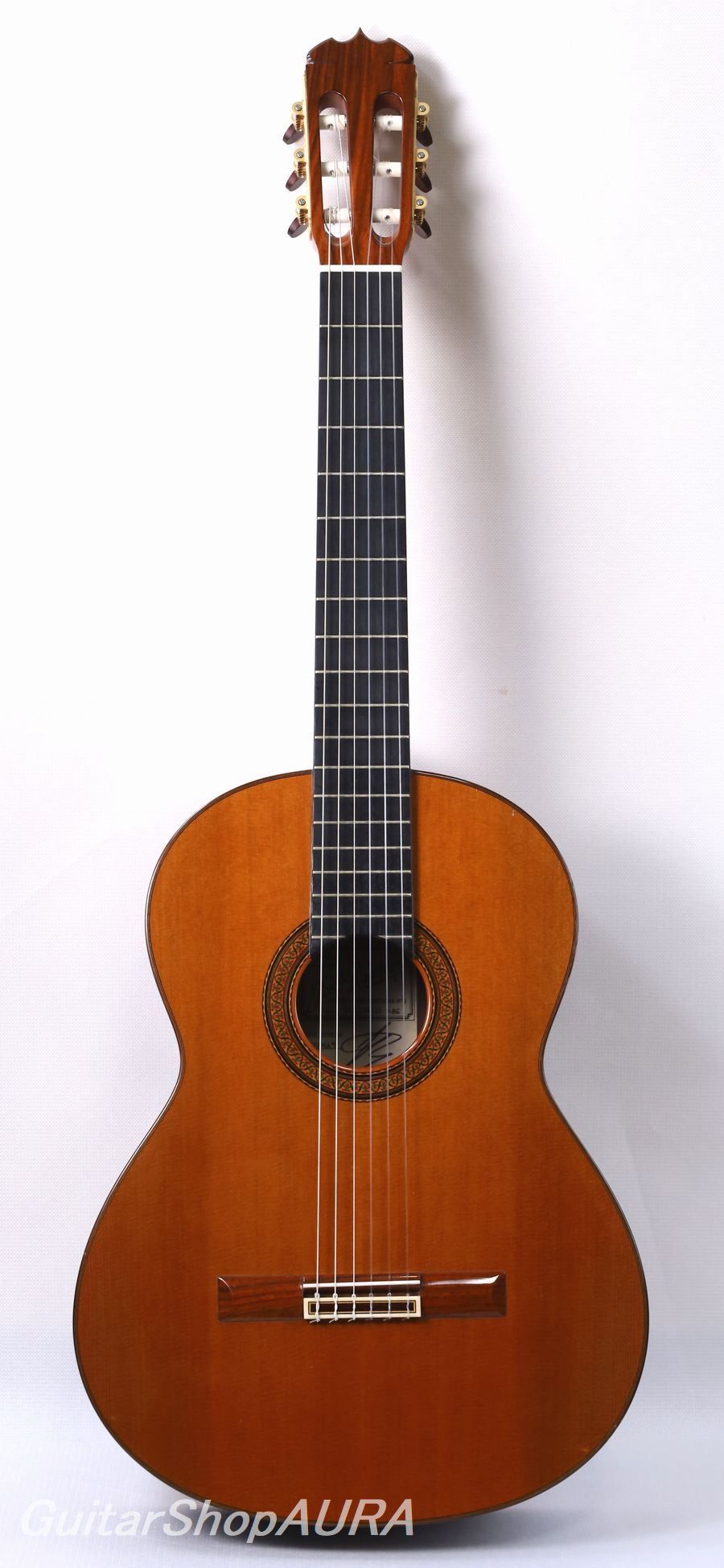
| Instrument | Jose Ramirez III |
| Category | Imported Classical Guitars 〔Vintage〕 |
| Number/Model | FANA No.9 |
| Scale length | 664mm |
| Country | Spain |
| Year | 1986Year |
| Top | Sequoia |
| Side&Back | Solid South American Rosewood |
| Condition※ | 7 |
| List price | INQUIRE |
| Price (tax included) | Please Inquire |
| option |
Click to enlarge the photos below
Neck: Cedro
Fingerboard: Ebony
Finish (Top): Polyurethane
Finish (Back & Sides): Polyurethane
Tuning Machines: Schaller
String Height (1st): 3.2mm
String Height (6th): 4.6mm
[Profile]
Jose Ramirez is one of the most renowned and historic Spanish guitar brands, with over a century of tradition. Since the era of Jose Ramirez I (1858–1923) to the present day under Jose Ramirez V, the brand has maintained a place among the most important names in the history of Spanish guitar making, continuing to operate globally.
Especially notable are the guitars crafted during the era of Jose Ramirez III (1922–1995), often referred to as the 'Ramirez dynasty.' These guitars, while innovative, garnered widespread popularity, captivating guitarists and guitar enthusiasts around the world. In the late 1950s and 1960s, renowned craftsmen such as Paulino Bernabe and Mariano Tesanos worked as head craftsmen, establishing a unique workshop system that allowed for mass production while maintaining the quality of high-end handmade instruments. In 1964, the '1A' model, which became the brand's flagship, was introduced. This model replaced the traditional pine top with cedar, increased the body thickness, and added a double layer of sheep’s wool inside the sides. The scale length was set to 664mm (compared to the standard 650mm), and the lacquer was changed from shellac to a more durable urea resin, enhancing the durability and creating a unique, sweet, and glossy tone known as 'Ramirez Stone.' This combination of innovative design and eye-catching red lacquer gave the '1A' model unprecedented popularity in the history of guitars.
The reforms implemented by Ramirez III, both in terms of market strategy and craftsmanship, were groundbreaking and responded to the demands of the times. They had an enormous influence on the future of guitar making and solidified Ramirez's place in the history of classical guitar.
Ramirez IV (1953–2000), the son of Ramirez III, began working as an apprentice in his father’s workshop at the age of 18. In 1977, he was officially recognized as a master craftsman. In 1988, he and his sister Amalia took over the management of the brand, continuing his father’s philosophy while adapting to contemporary needs by introducing new models, such as the 'Estudio' model and adopting the standard 650mm scale. Despite his efforts to expand the brand, Ramirez IV passed away just five years after his father in 2000.
Following Ramirez IV's passing, Amalia continued to develop the brand with a focus on flexible product development. However, since the 2000s, there has been a growing demand for models created during the era of Ramirez III and IV, particularly those crafted by famous luthiers with initials stamped on the 1960s models. These vintage models remain cherished by fans to this day.
[Descriptin]
This is a Jose Ramirez Custom Model 'FANA' No. 9, made in 1986 and used. This special edition guitar was produced in a limited run of 15 units to commemorate the 15th anniversary of the Japanese guitar shop FANA. The label reads 'Serie Especial,' with the model name 'FANA No. 9.' The guitar does not have a serial number on the label, but a sticker with the number '#6-517' is affixed inside the side of the body. Additionally, there is a '4' stamp inside, and according to Ramirez’s official records, it is credited as being made by Carmero Llerena Martinez.
The top of the guitar is made of Sequoia cedar, and the back and sides are constructed from Brazilian rosewood, making this model a high-spec version in terms of materials.
The internal structure of the top includes harmonic bars placed above and below the soundhole, and a third bar crossing diagonally from the high to low end, positioned directly beneath the soundhole. There are also six fan braces arranged with two on the treble side and three on the bass side, with two closing bars at the bottom. The resonance is tuned to G# below the standard pitch. While the basic structure is similar to the Ramirez '1A' model, this guitar differs in that the sides are made with a single layer of rosewood, with a third of the side near the top being reinforced with a double structure, unlike the '1A' which uses a double layer throughout.
Although the top is made of cedar, which is usually associated with rich, deep bass tones, this model produces a relatively flat, clear sound. The tone is firm, with a subtle warmth characteristic of cedar, especially in the mid to high ranges. The guitar has a high tonal pressure, characteristic of Ramirez guitars, with a dense and sweet upper register, making it highly suitable for melodic performance.
There are no major repair histories, such as cracks. The top edge has a few small dings, and there are some play marks and friction scuffs across the body, which are typical of an instrument of its age. The neck has only a slight forward bow, and the frets show slight wear from strings 1 to 7, but these do not affect playability. The action is set to 3.2mm (1st string) and 5.0mm (6th string), typical of the settings used by Ramirez during this period. While these measurements are relatively high, the fingerboard is sloped from the 6th to the 1st string, making it easier to play than it might seem from the numbers. The tuning machines have been replaced with Schaller Grand Tune models.